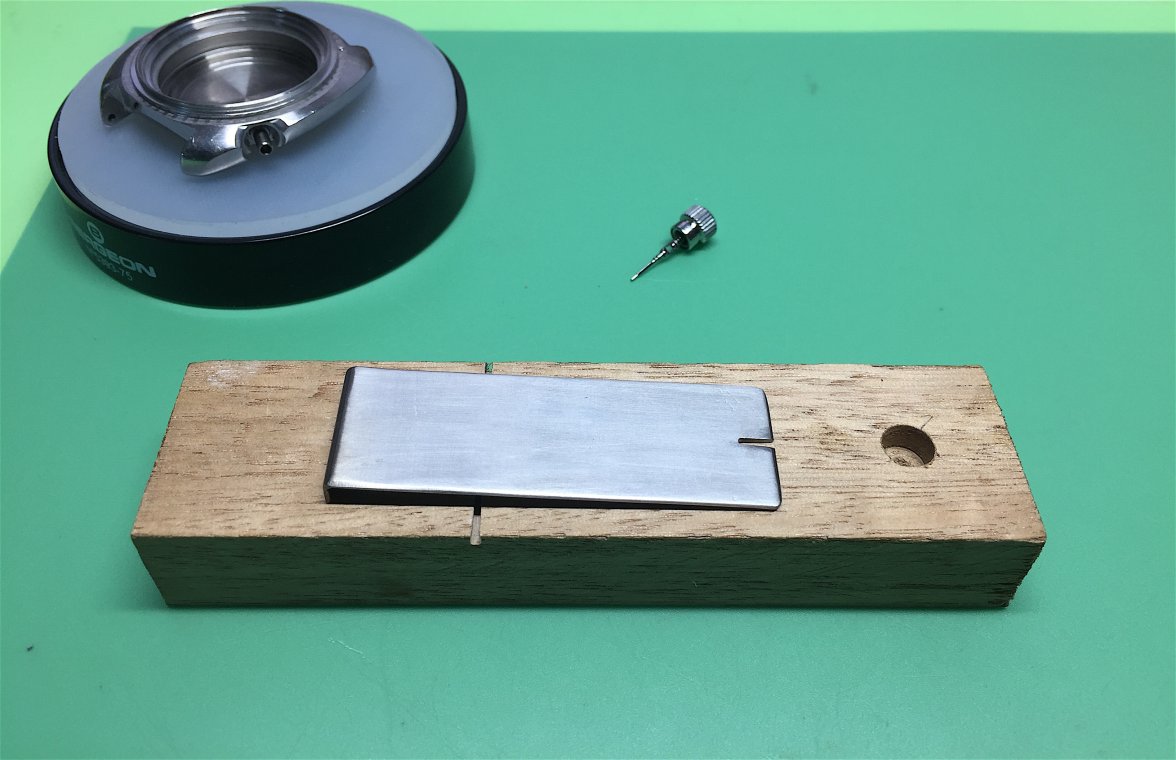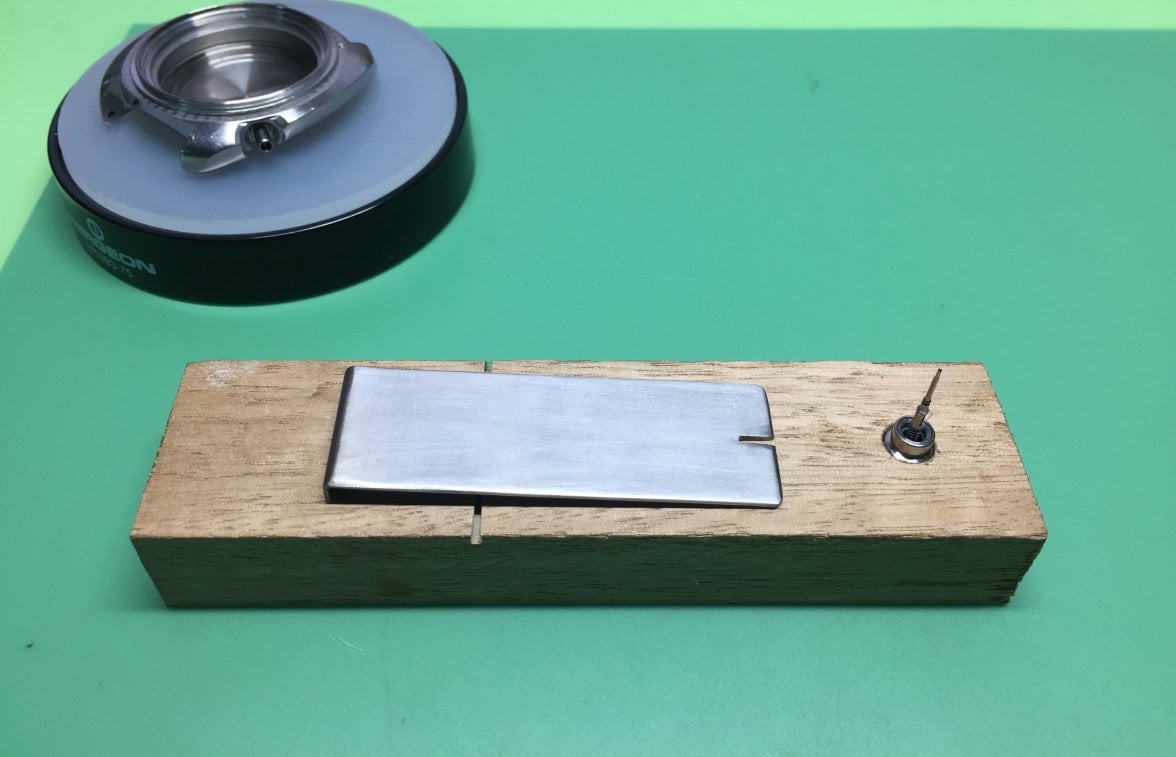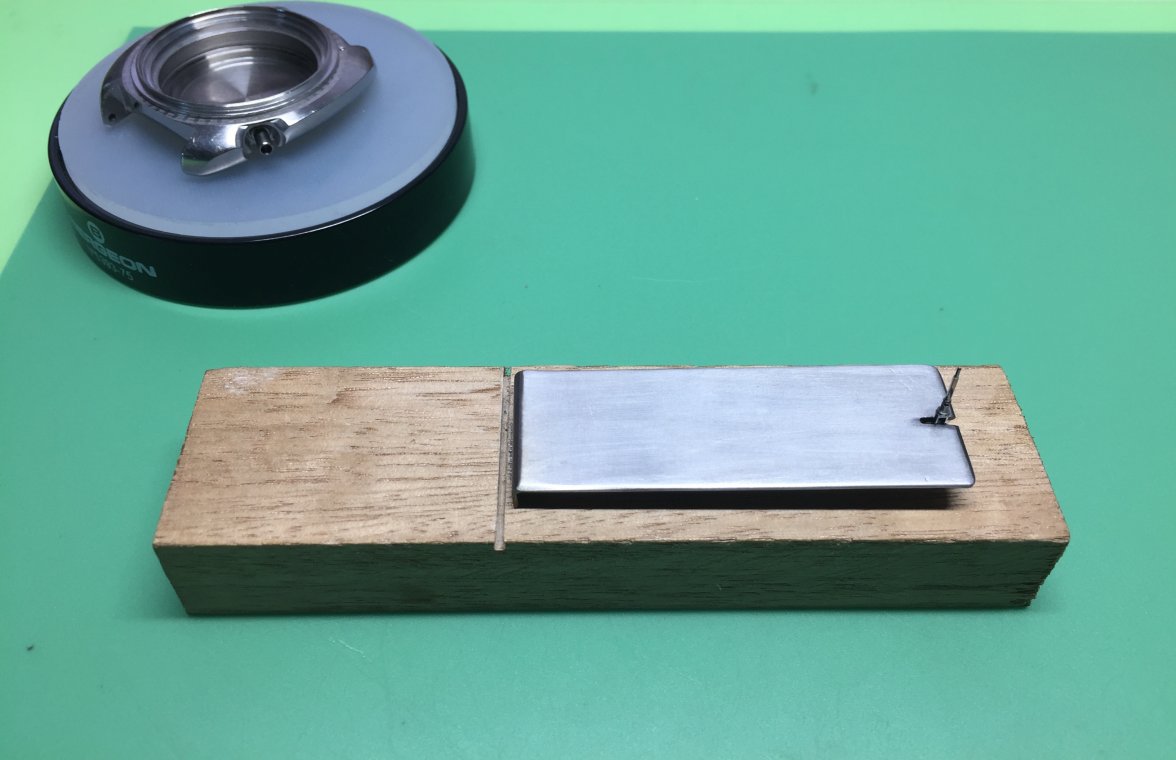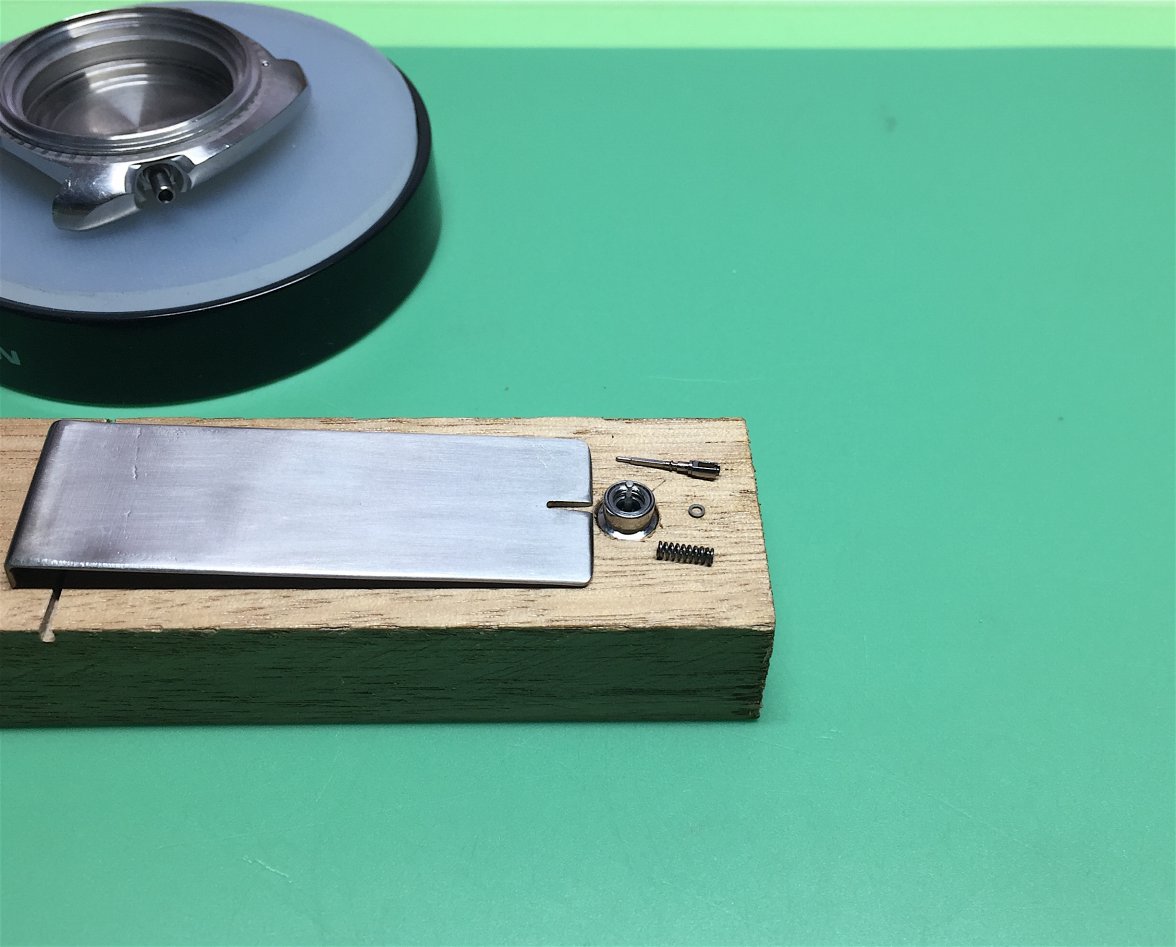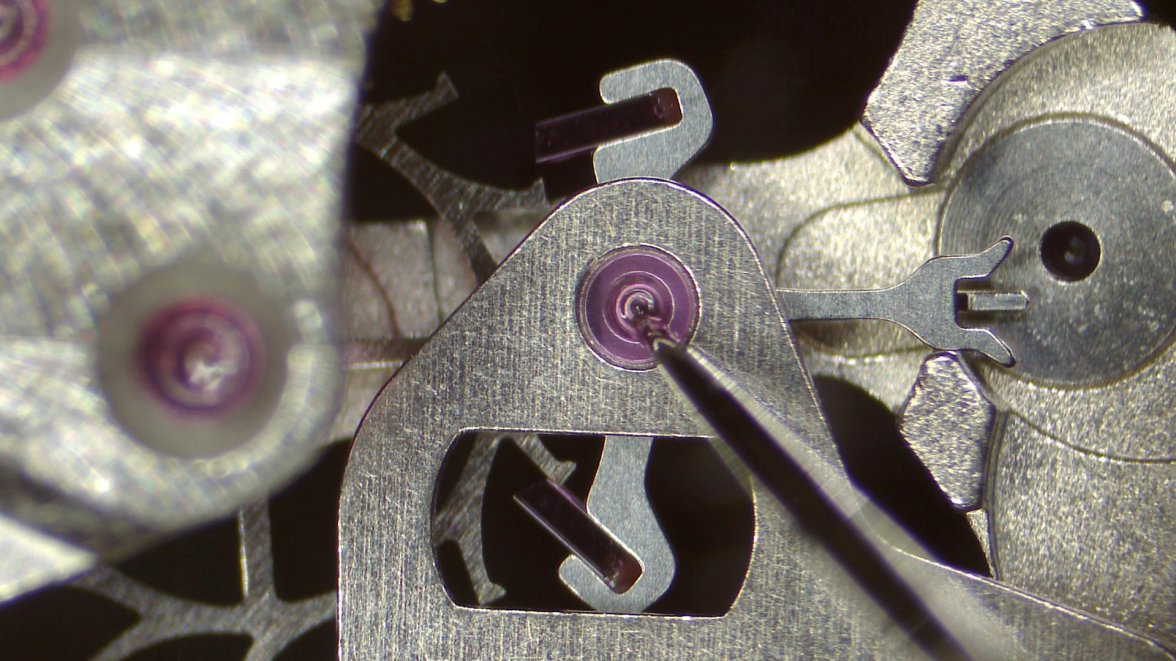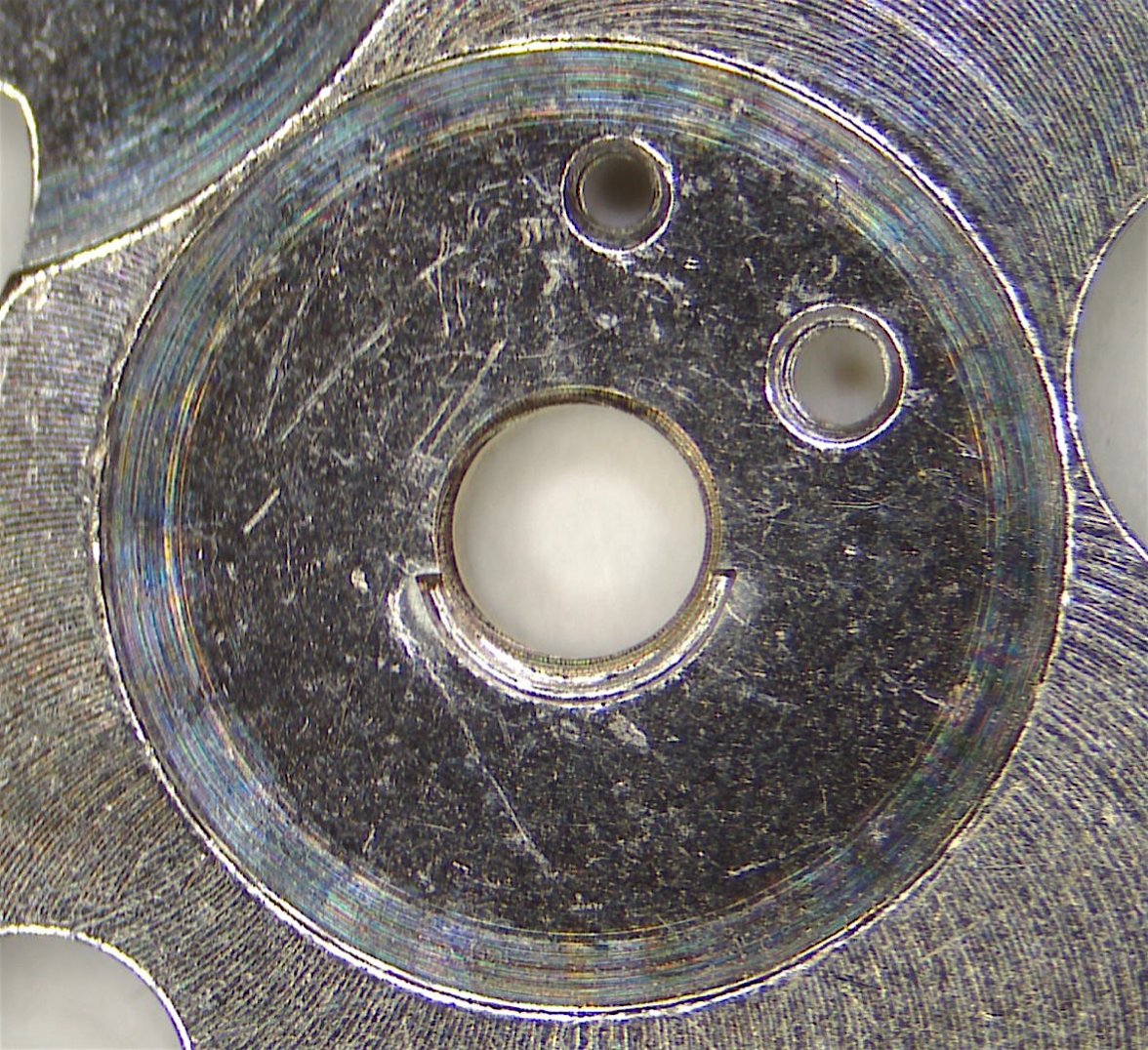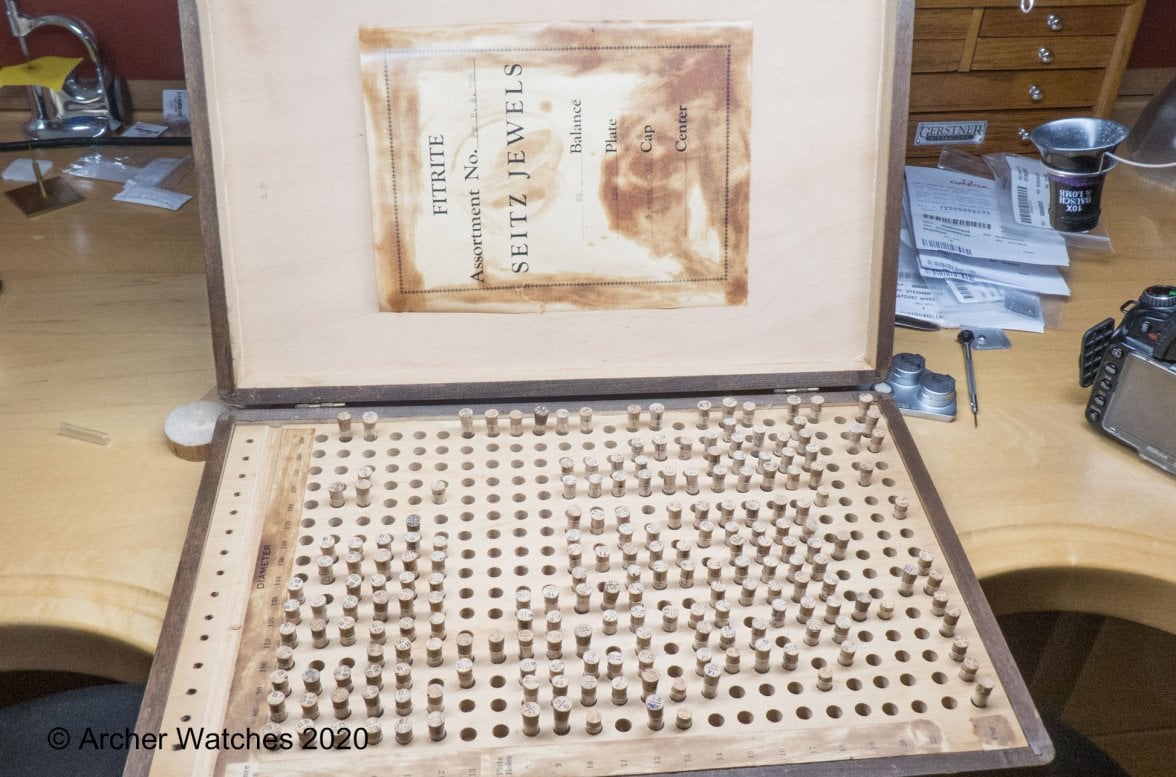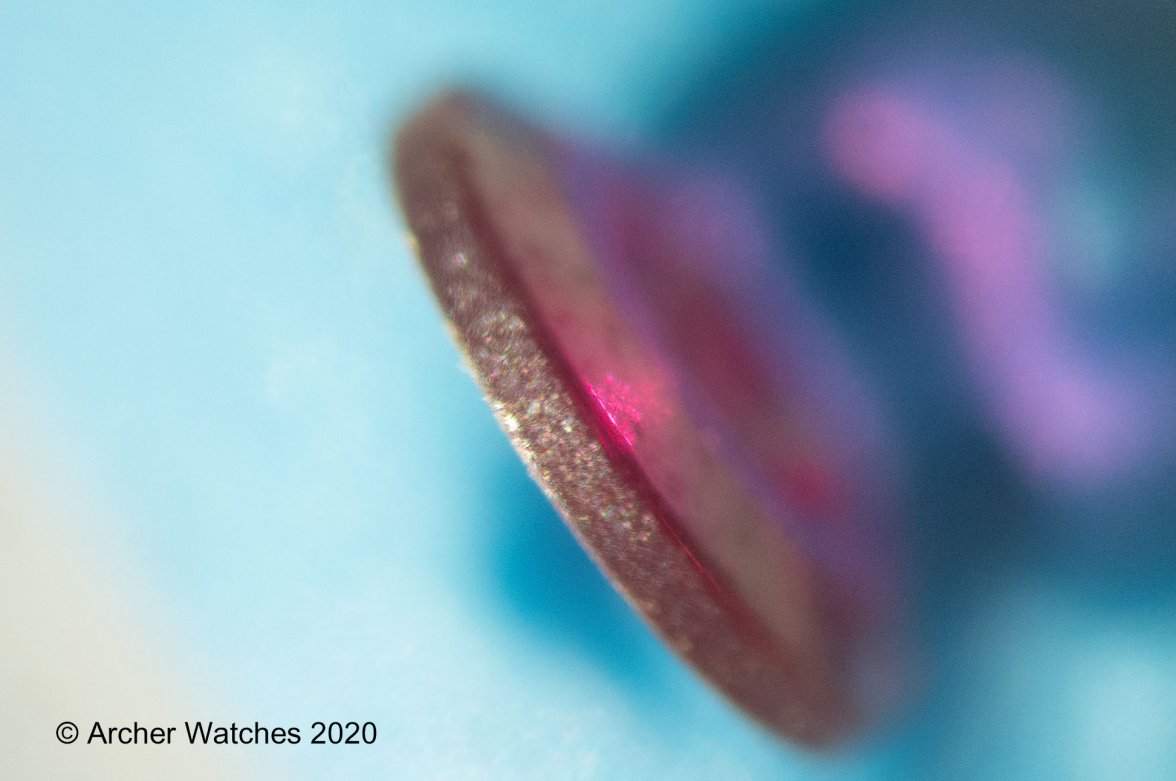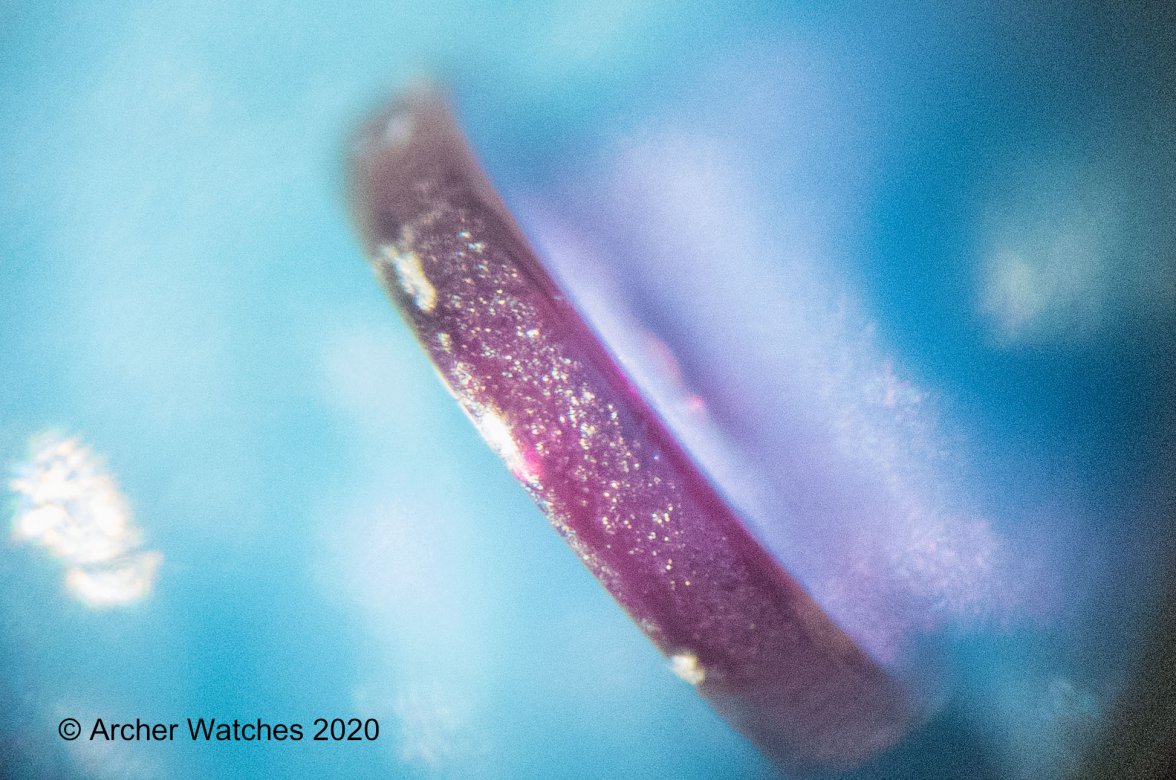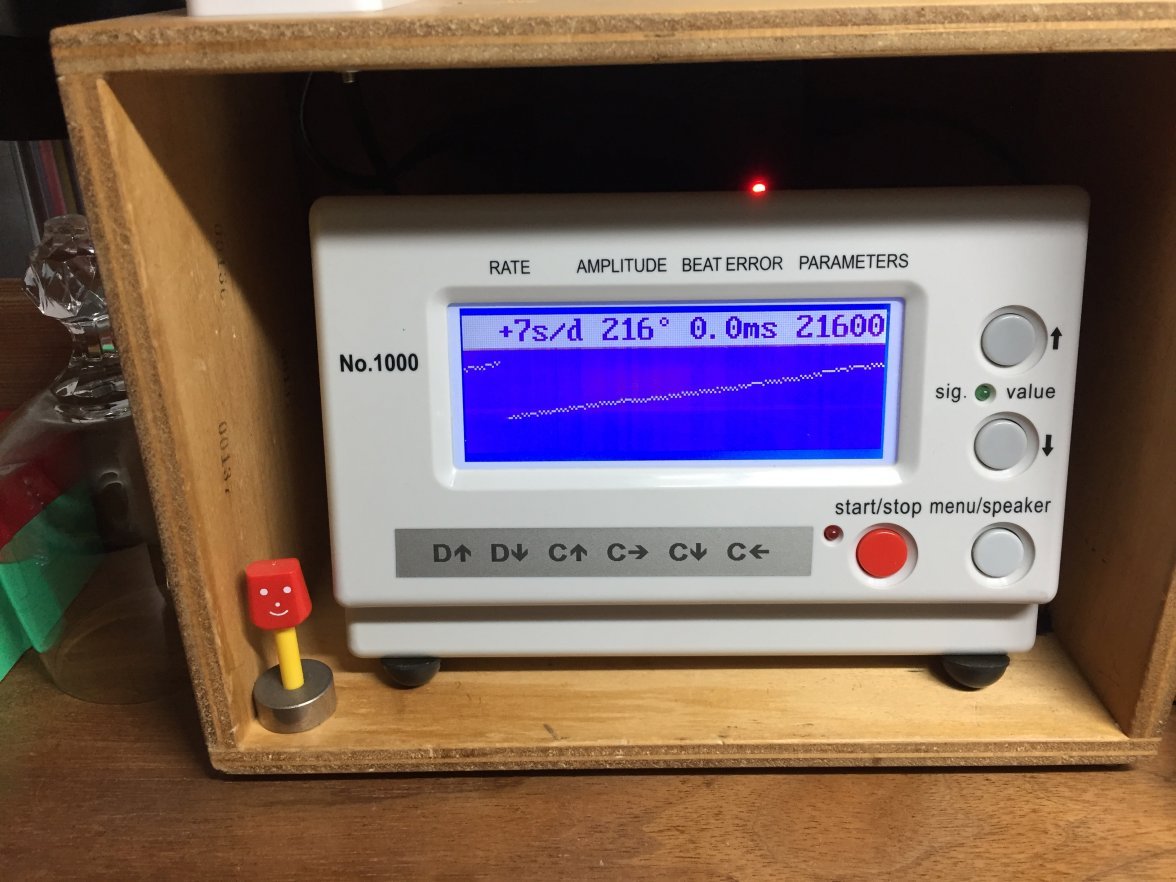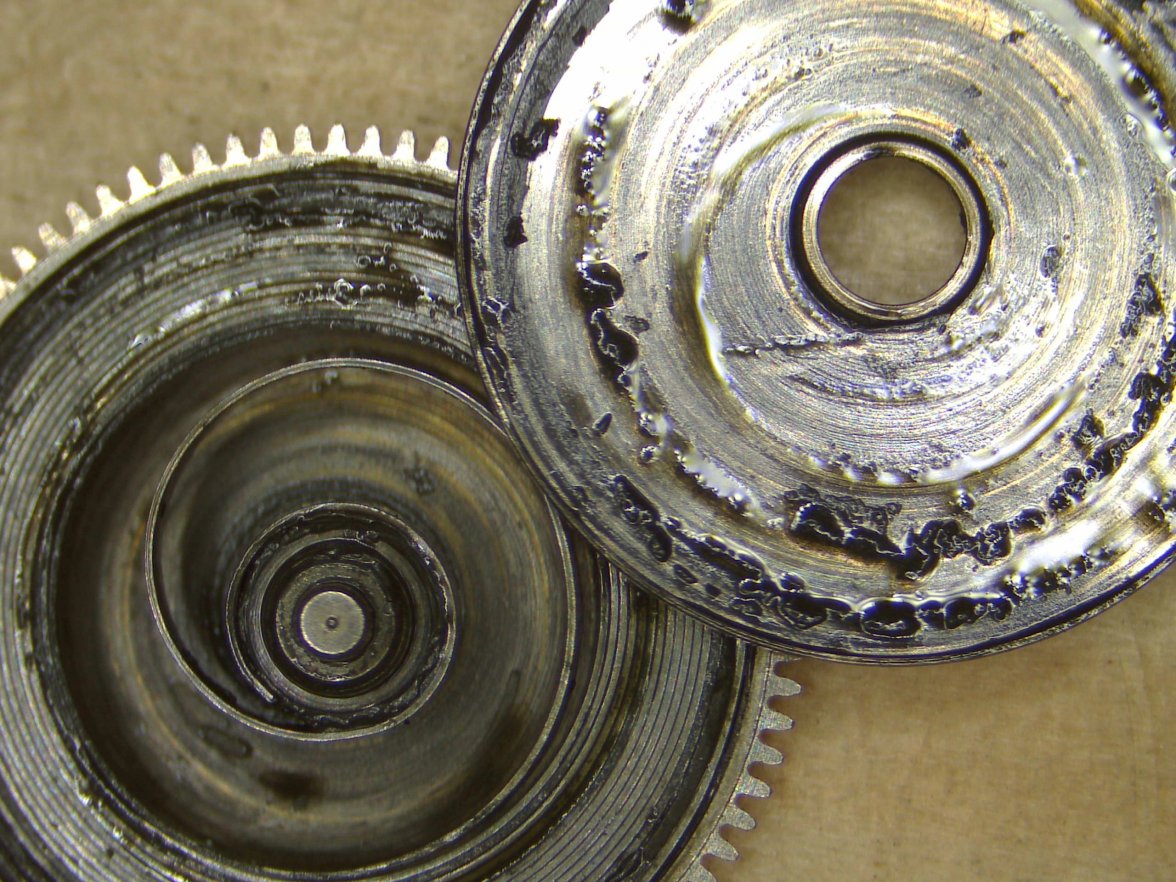JimInOz
··Melbourne AustraliaI got sick of needing three hands to remove stem parts from Seiko (and other) spring loaded stems.
This is the type of stem.
You need one hand to hold the crown (or a stable soft jaw vice), One hand to use strong tweezers to push the spring washer and spring down, and another hand to remove the sprung stem.
All the time hoping the tweezers don't slip and the stem and washer vanish into the ether.
I've been doing a few Seikos lately and got tired of holding my breath as I disassembled/assembled these little buggers.
So I made a tool. A block of Tassie Oak with a 7mm dia hole for the crown and a stainless plate with a slot to fit over the stem.
Now I just pop the unit into the tool.
Align the stem and fit the plate over the stem washer.
Press down and remove the sprung stem.
And "Viola!", all done, easy peasy. Re-assembly is just as easy and no more flying stems and washers.
This is the type of stem.
You need one hand to hold the crown (or a stable soft jaw vice), One hand to use strong tweezers to push the spring washer and spring down, and another hand to remove the sprung stem.
All the time hoping the tweezers don't slip and the stem and washer vanish into the ether.
I've been doing a few Seikos lately and got tired of holding my breath as I disassembled/assembled these little buggers.
So I made a tool. A block of Tassie Oak with a 7mm dia hole for the crown and a stainless plate with a slot to fit over the stem.
Now I just pop the unit into the tool.
Align the stem and fit the plate over the stem washer.
Press down and remove the sprung stem.
And "Viola!", all done, easy peasy. Re-assembly is just as easy and no more flying stems and washers.

